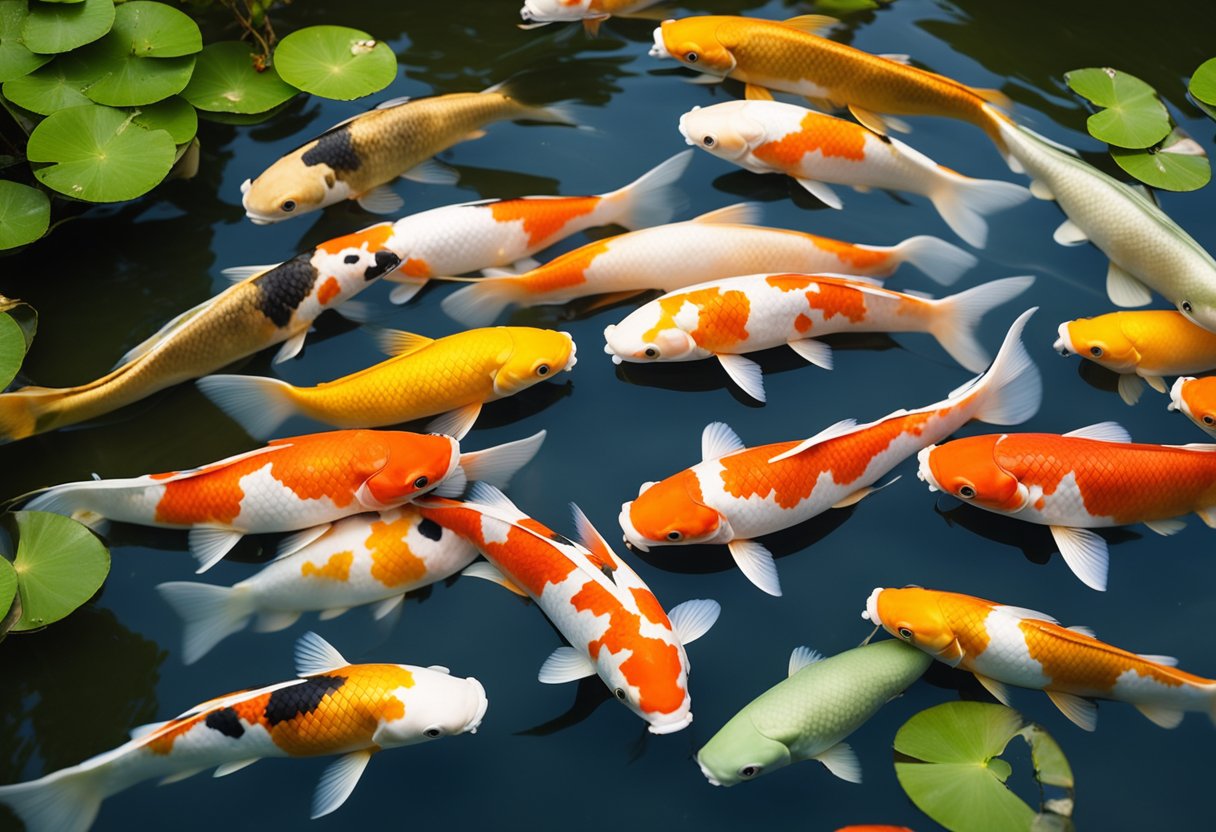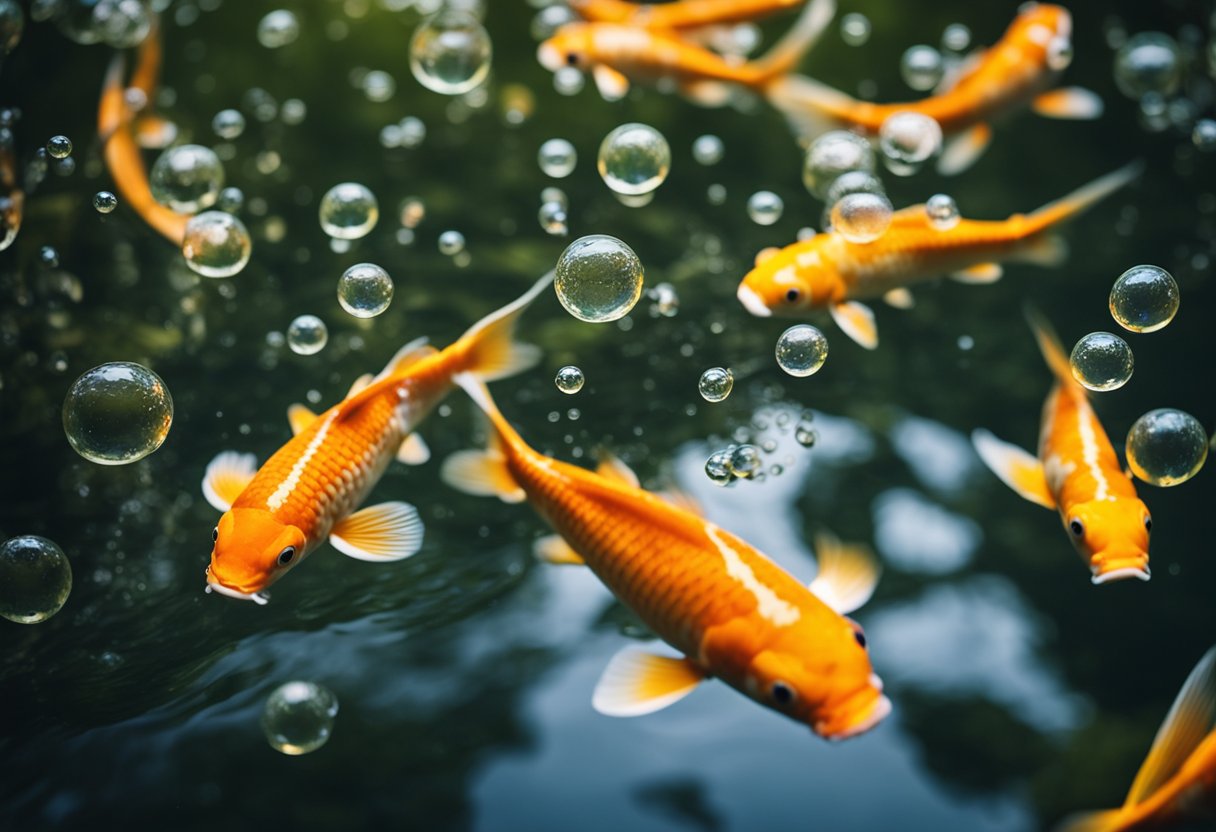Introducing new Koi fish to an existing pond can be a delicate process that requires careful attention to water quality and temperature. Failure to properly acclimate new Koi fish can result in stress, illness, or even death.
The first step in acclimating new Koi fish to an existing pond is to ensure that the water quality is optimal. This means testing the water for pH, ammonia, nitrite, and nitrate levels. If any of these levels are out of balance, it is important to correct them before introducing new fish. Additionally, it is important to ensure that the water temperature in the pond is within a safe range for the new Koi fish.
Once the water quality and temperature have been addressed, the next step is to slowly introduce the new Koi fish to the pond. This can be done by placing the fish in a separate container filled with water from the pond and gradually adding small amounts of pond water over a period of several hours. This allows the fish to slowly adjust to the new environment and reduces the risk of shock or stress. With proper acclimation, new Koi fish can thrive in an existing pond and add to the beauty and enjoyment of the space.
Understanding Koi Fish Acclimation

Acclimating new Koi fish to an existing pond is a delicate process that requires attention to detail and patience. The goal is to create a smooth transition for the new fish, so they can adapt to the water conditions and coexist with the existing fish in the pond.
Before introducing new Koi fish to the pond, it’s important to understand the acclimation process. This involves gradually adjusting the fish to the water temperature, pH levels, and other environmental factors in the pond.
One way to acclimate new Koi fish is to use the drip method. This involves slowly adding water from the pond to the bag or container holding the new fish. This allows the fish to gradually adjust to the water conditions in the pond. It’s important to monitor the water temperature and pH levels during this process to ensure they are consistent with the pond’s parameters.
Another method is the float method, which involves placing the bag or container with the new fish in the pond for a period of time. This allows the water temperature in the bag to gradually adjust to the temperature of the pond. It’s important to keep an eye on the fish during this process to ensure they are not stressed or showing signs of distress.
It’s recommended to quarantine new Koi fish for a period of time before introducing them to the pond. This helps to prevent the spread of any potential diseases or parasites. During quarantine, it’s important to monitor the fish closely and treat any health issues that may arise.
In summary, acclimating new Koi fish to an existing pond requires attention to detail and patience. Using methods such as the drip method or float method, and quarantining new fish can help create a smooth transition for the new fish and ensure they coexist with the existing fish in the pond.
Preparing the Pond for New Koi

Before introducing new Koi fish to an existing pond, it is important to prepare the pond to ensure a healthy and safe environment. This section covers two important aspects of pond preparation: water quality and parameters, and pond cleaning and maintenance.
Water Quality and Parameters
Maintaining good water quality is essential for the health and well-being of Koi fish. Before introducing new Koi, it is important to test the water to ensure that the pH level, ammonia, nitrite, and nitrate levels are within the acceptable range.
The ideal pH level for Koi fish is between 7.0 and 8.0. If the pH level is too low or too high, it can cause stress and health problems for the fish. Ammonia, nitrite, and nitrate levels should also be monitored regularly, as high levels of these chemicals can be toxic to Koi fish.
To maintain good water quality, it is recommended to perform regular water changes and use a good quality filtration system. Adding beneficial bacteria to the pond can also help to break down waste and maintain a healthy ecosystem.
Pond Cleaning and Maintenance
Keeping the pond clean and well-maintained is also important for the health of Koi fish. Before introducing new Koi, it is recommended to perform a thorough cleaning of the pond, including removing any debris, algae, or dead plants.
Regular maintenance tasks such as skimming the surface of the pond, removing any fallen leaves or debris, and trimming overgrown plants can help to keep the pond clean and healthy. It is also important to monitor the temperature of the water, as Koi fish thrive in water temperatures between 60 and 75 degrees Fahrenheit.
By ensuring good water quality and performing regular cleaning and maintenance tasks, the pond can provide a healthy and safe environment for new Koi fish.
Quarantine Procedures for New Koi
When introducing new Koi fish to an existing pond, it is important to take quarantine procedures seriously. Quarantine is a necessary step to prevent the spread of diseases and parasites that may be carried by the new fish.
The quarantine period should last at least two weeks, during which the new Koi should be kept in a separate tank or pond. The quarantine tank should be well-aerated and have a filtration system to maintain water quality.
During the quarantine period, the new Koi should be closely monitored for any signs of illness or abnormal behavior. It is recommended to perform regular water tests and water changes to ensure the water parameters are optimal for the health of the fish.
Before introducing the new Koi to the existing pond, it is important to slowly acclimate them to the new environment. This can be done by gradually adding water from the existing pond to the quarantine tank over a period of several days.
By following proper quarantine procedures, the risk of introducing diseases and parasites to the existing pond can be significantly reduced. It is important to prioritize the health and well-being of all the fish in the pond.
Acclimation Techniques
When introducing new Koi fish to an existing pond, it is important to acclimate them properly to ensure their health and well-being. Here are some techniques to follow for successful acclimation:
Temperature Acclimation
Koi fish are sensitive to temperature changes, so it is important to gradually adjust the water temperature in their transport bag to match that of the pond. To do this, float the bag on the surface of the pond for about 15 minutes. Then, add a small amount of pond water to the bag and wait another 15 minutes. Repeat this process every 15 minutes until the water in the bag is the same temperature as the pond. This process should take about an hour.
Water Chemistry Adjustment
The water chemistry in the transport bag may differ from that of the pond, so it is important to adjust the water chemistry gradually to prevent shock to the fish. Start by adding a small amount of pond water to the bag every 15 minutes, just as you did for temperature acclimation. After an hour, the water in the bag should be mostly pond water. At this point, you can add a water conditioner to the bag to remove any chlorine or chloramines that may harm the fish. Wait another 15 minutes before releasing the fish into the pond.
By following these acclimation techniques, you can ensure a smooth transition for your new Koi fish into their new home.
Monitoring and Adjusting to Pond Life
Observing Koi Behavior
After introducing new Koi fish to an existing pond, it is important to monitor their behavior closely. This will help you identify any potential problems and make adjustments accordingly. One thing to look out for is aggressive behavior towards other fish. If you notice any fish chasing or nipping at each other, it may be necessary to add more hiding places to the pond to reduce stress levels.
Another important behavior to monitor is feeding habits. New Koi may take some time to adjust to their new environment and may not eat as much as usual. It is important to observe their feeding habits closely and adjust their diet accordingly. Providing a variety of high-quality foods will help ensure that all of the fish in the pond receive adequate nutrition.
Feeding and Nutrition
Feeding the right amount and type of food is crucial to the health and well-being of Koi fish. When introducing new fish to an existing pond, it is important to feed them a small amount of food at first and gradually increase the amount over time. This will help prevent overfeeding and reduce the risk of water quality problems.
It is also important to provide a balanced diet that includes a variety of foods such as pellets, flakes, and live or frozen foods. This will help ensure that the fish receive all of the necessary nutrients for optimal health. Additionally, it is important to avoid feeding the fish too much at once, as this can lead to uneaten food sinking to the bottom of the pond and causing water quality problems.
Overall, monitoring the behavior and feeding habits of new Koi fish is essential to their successful acclimation to an existing pond. By observing their behavior closely and adjusting their diet and environment as needed, you can help ensure that your Koi thrive in their new home.

As a dedicated veterinarian and animal enthusiast, I, Phoebe Wright, bring a unique perspective to my writing about Koi Fish. With my expertise in animal care, I strive to share valuable insights in a friendly and approachable manner, making my posts both informative and enjoyable to read.







